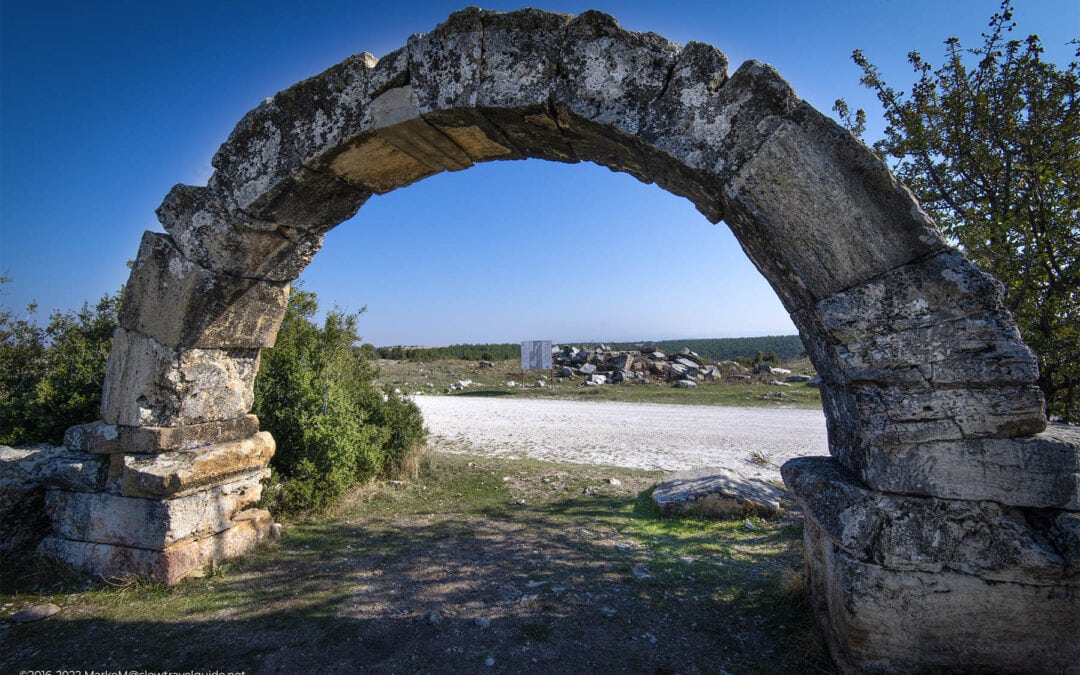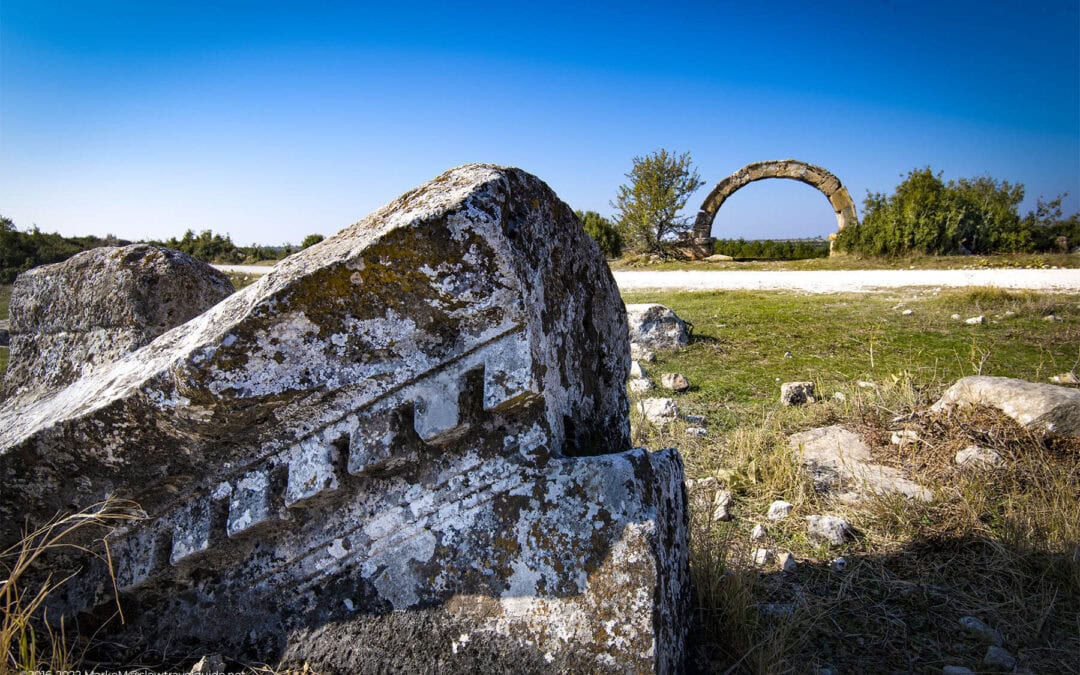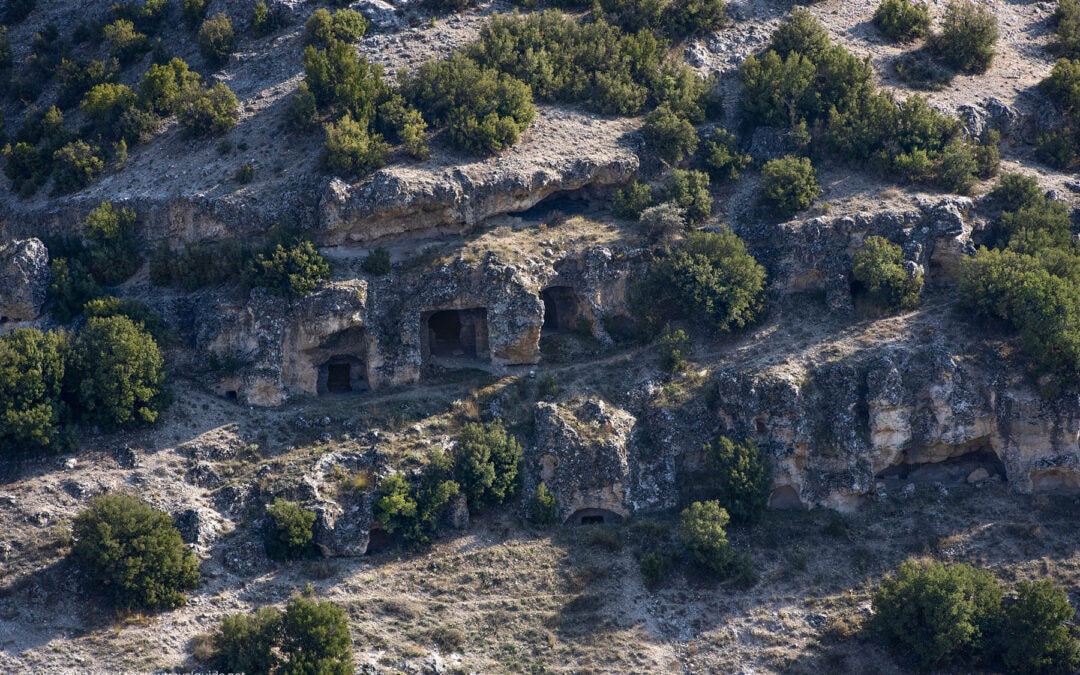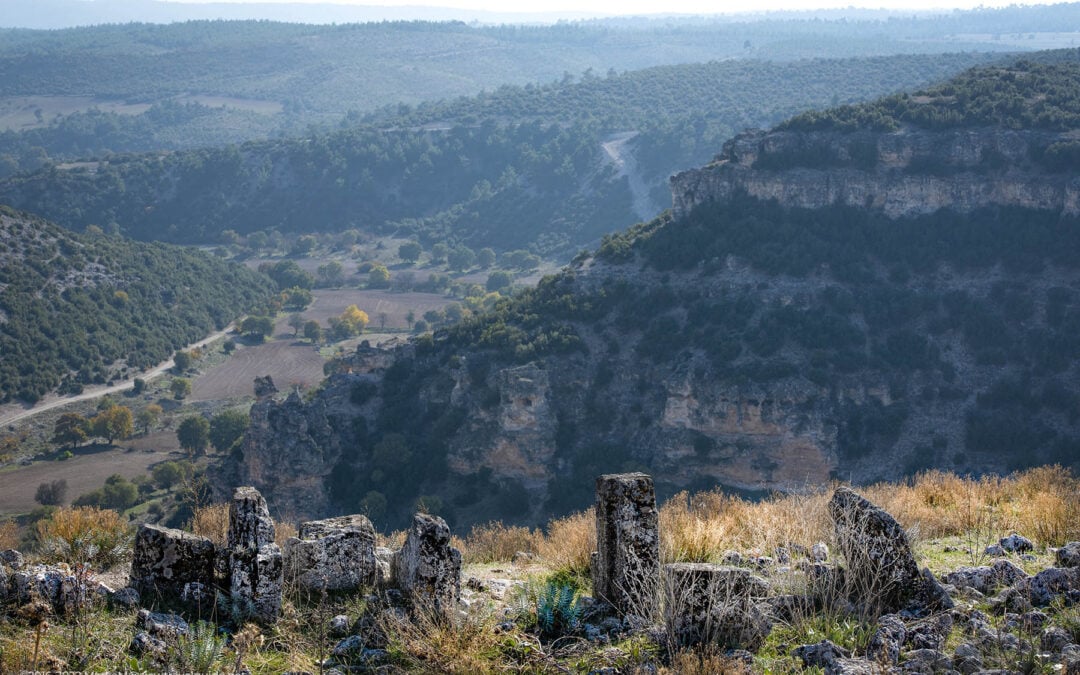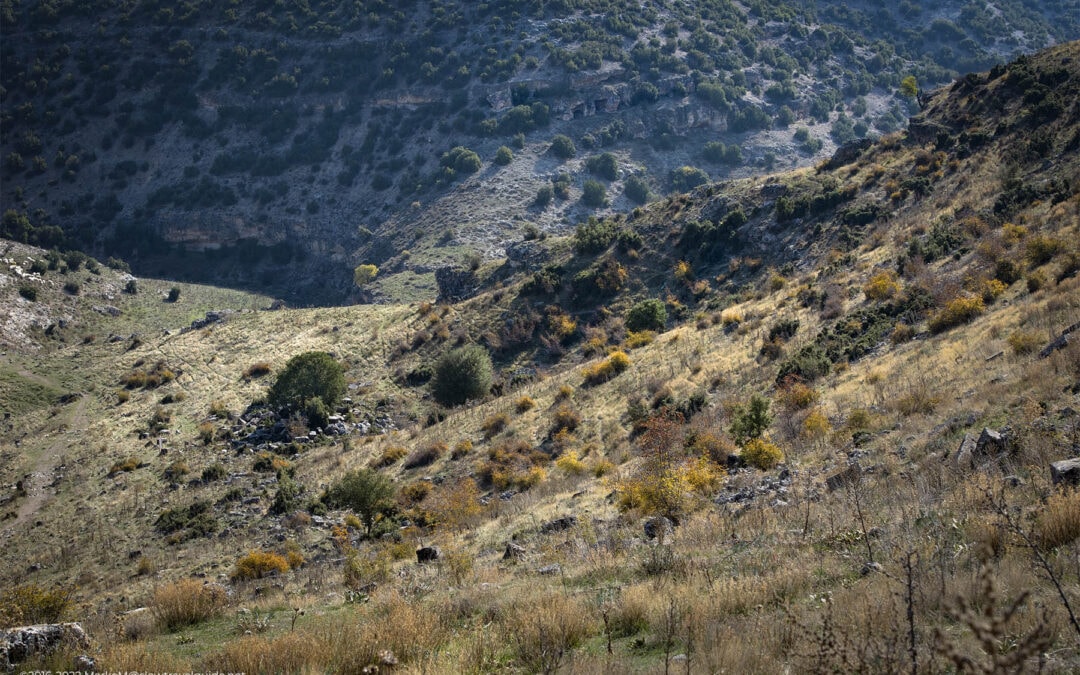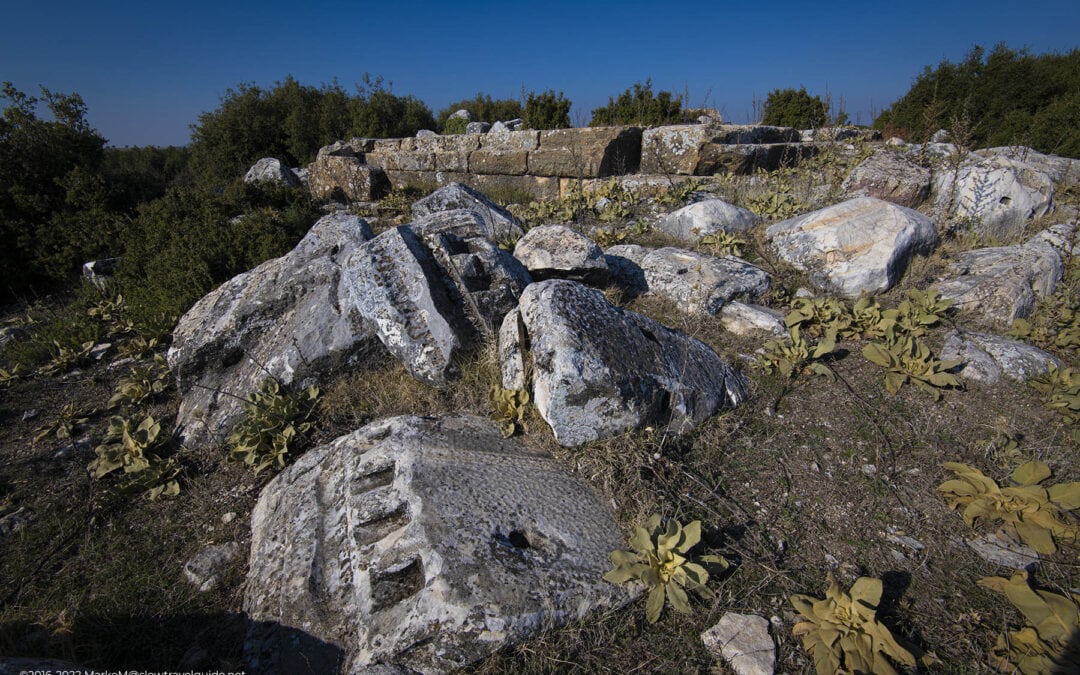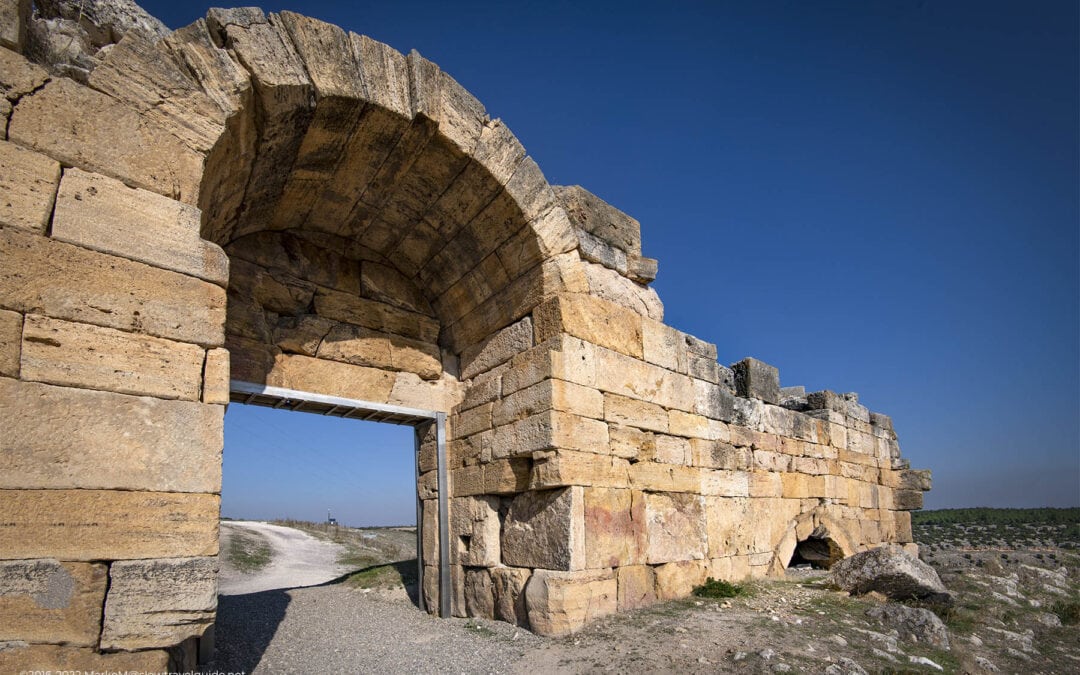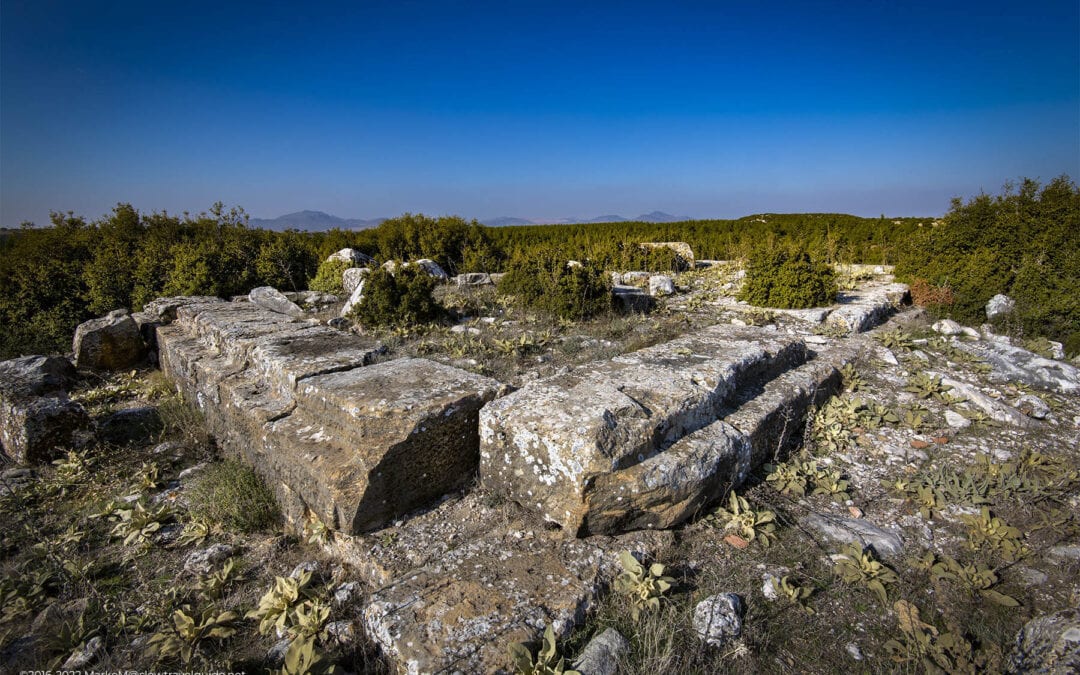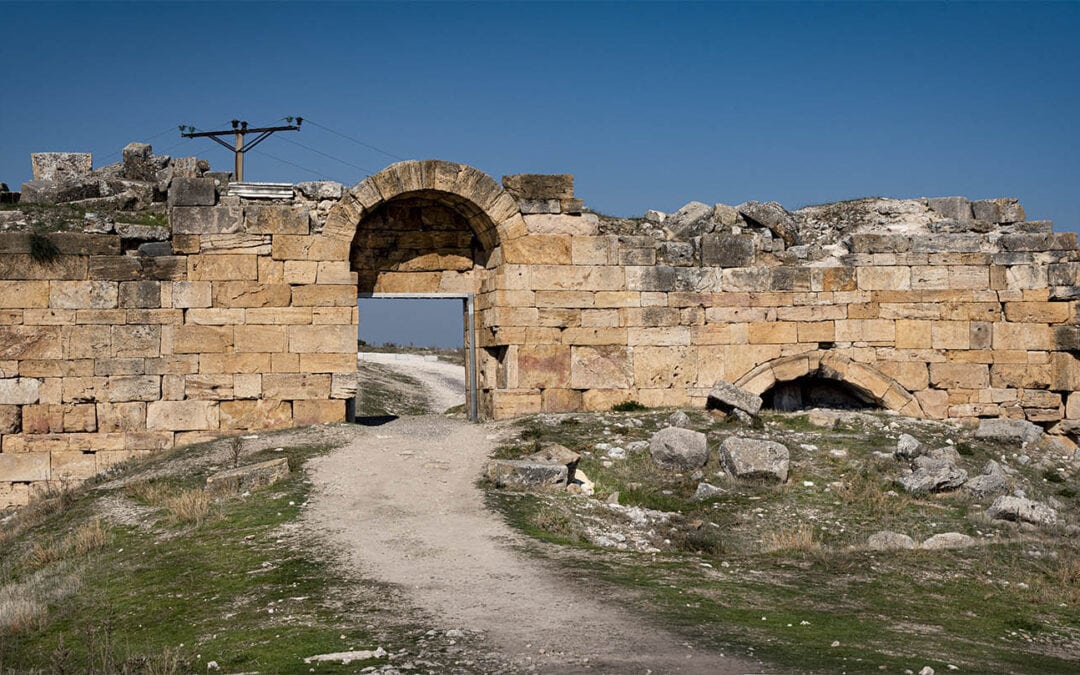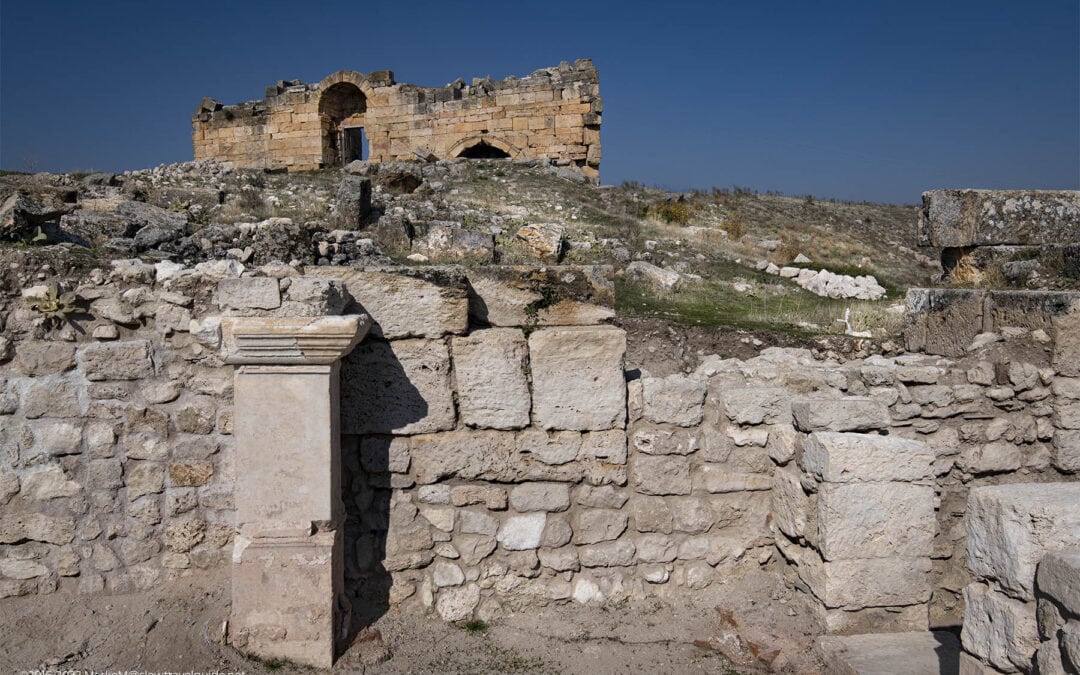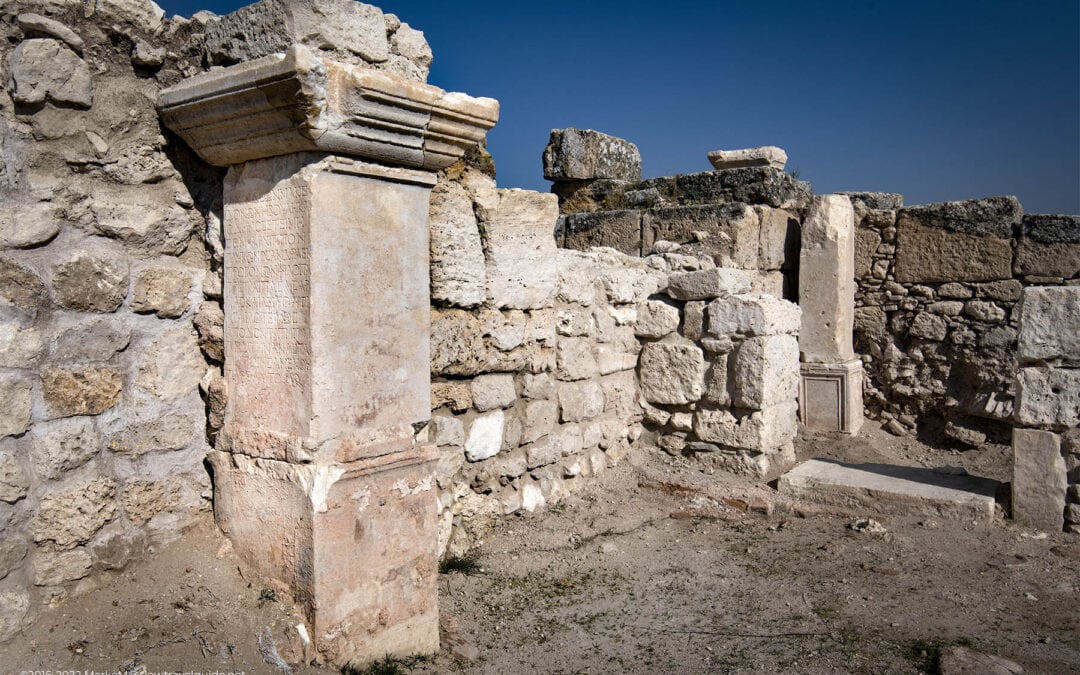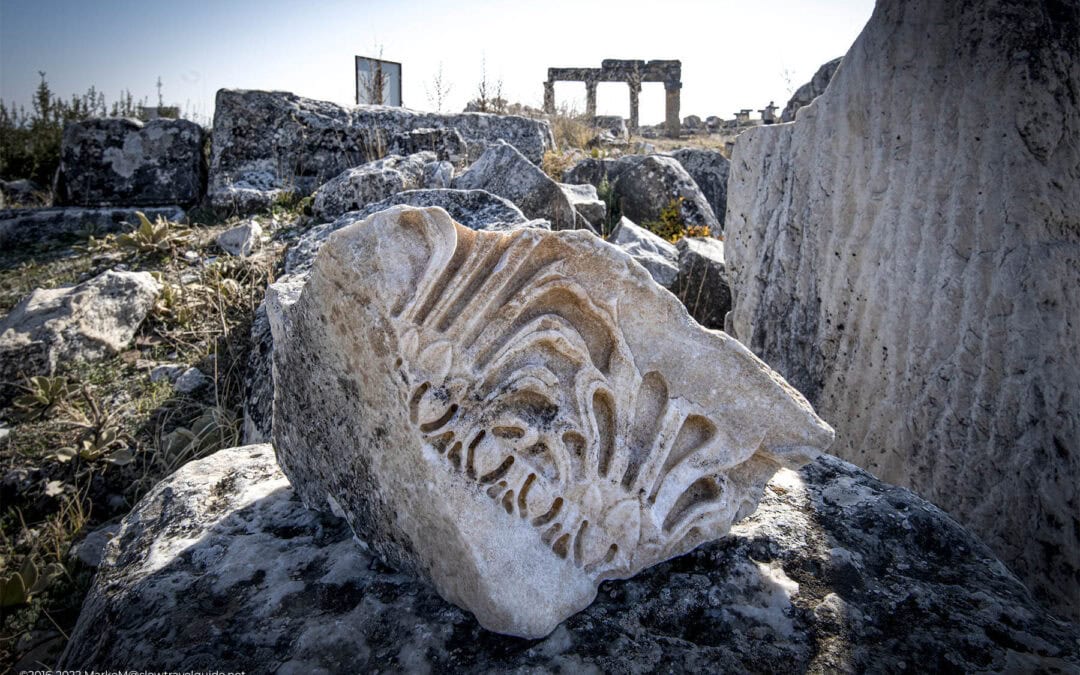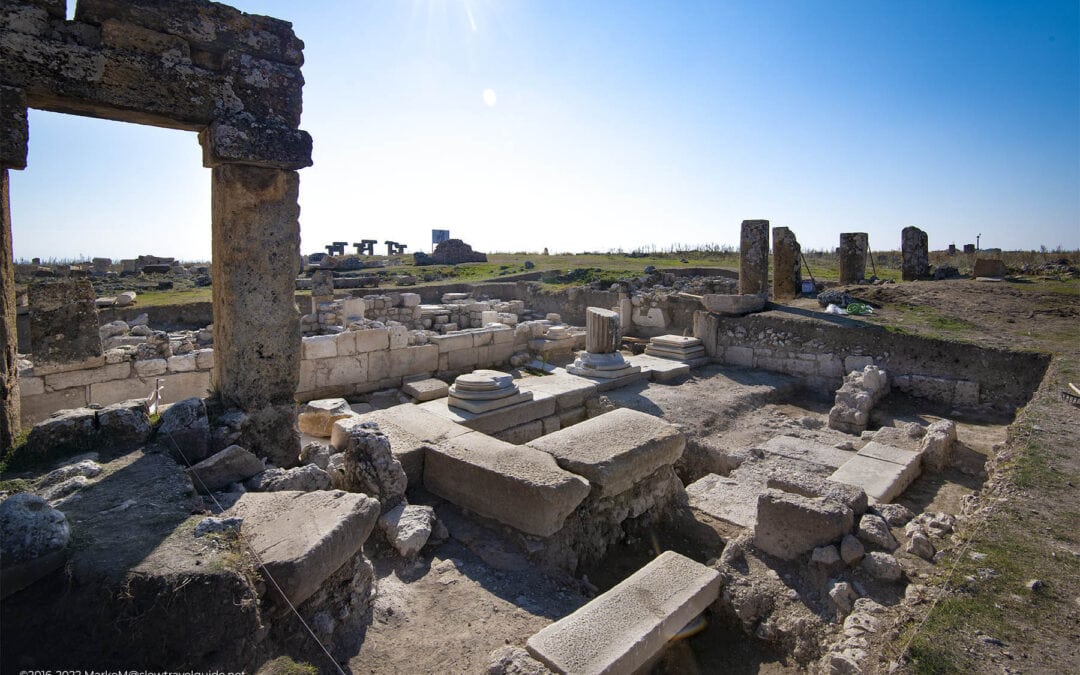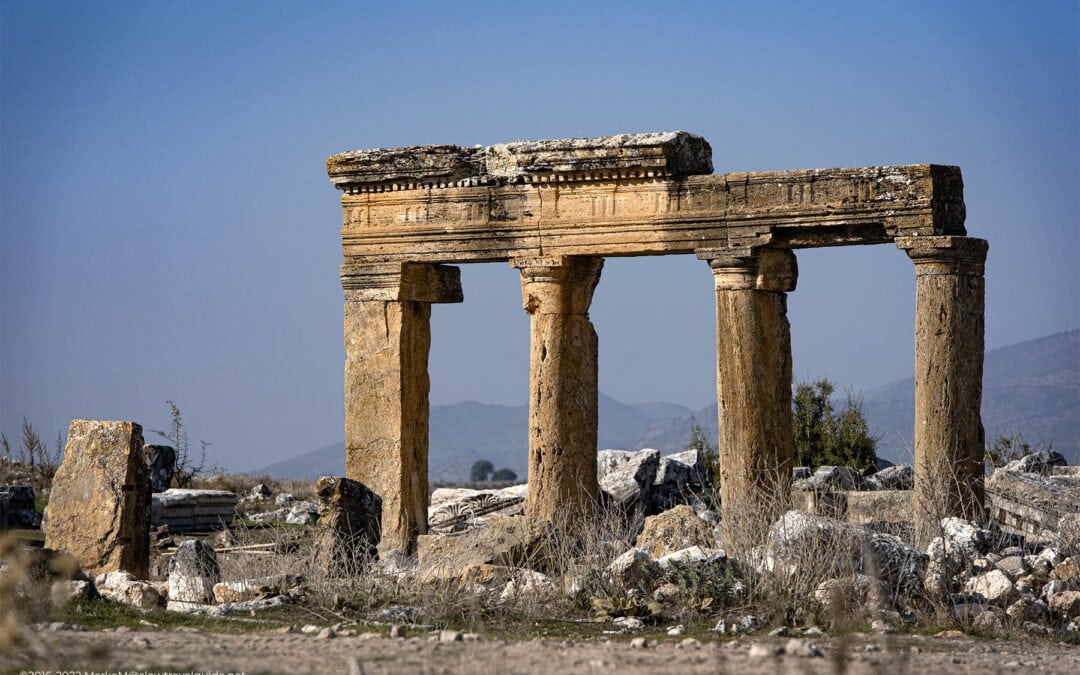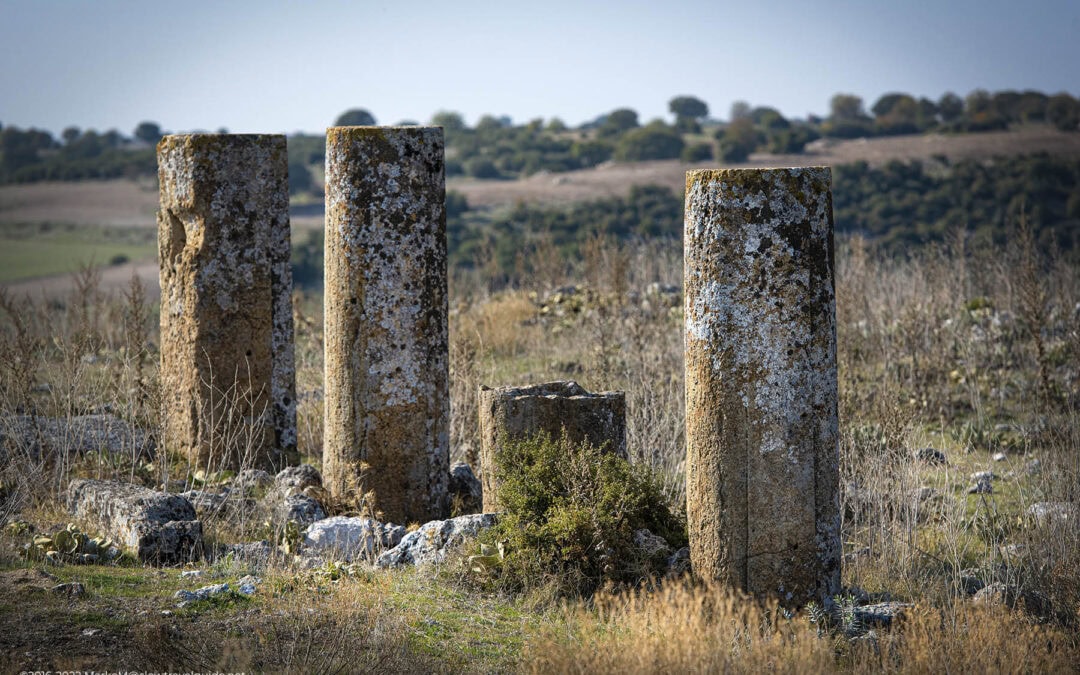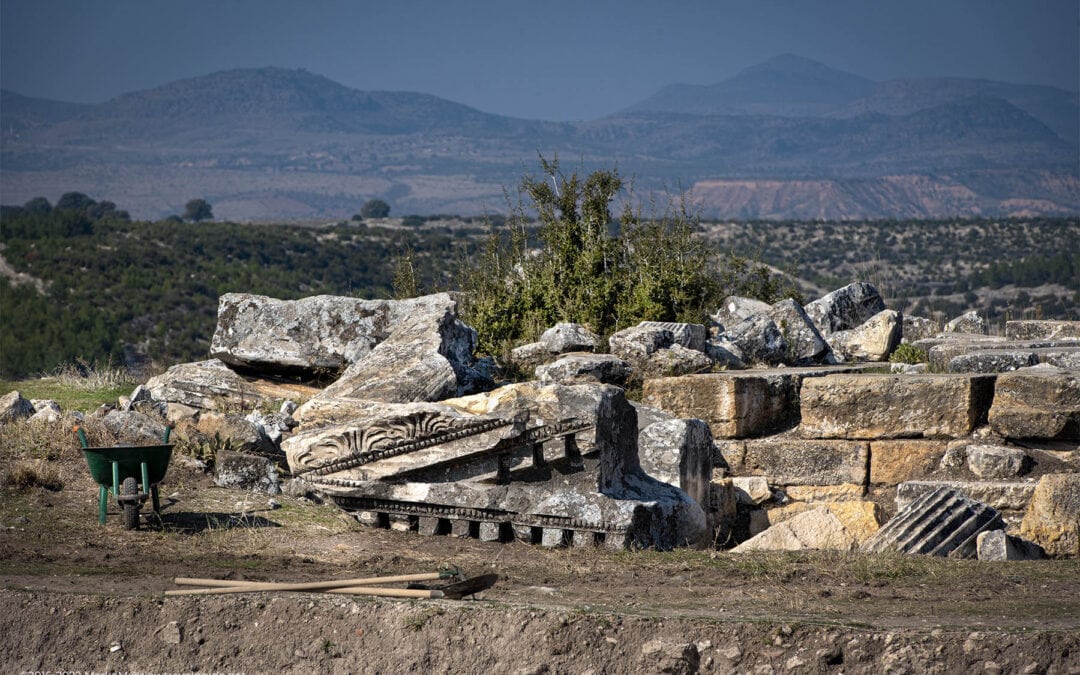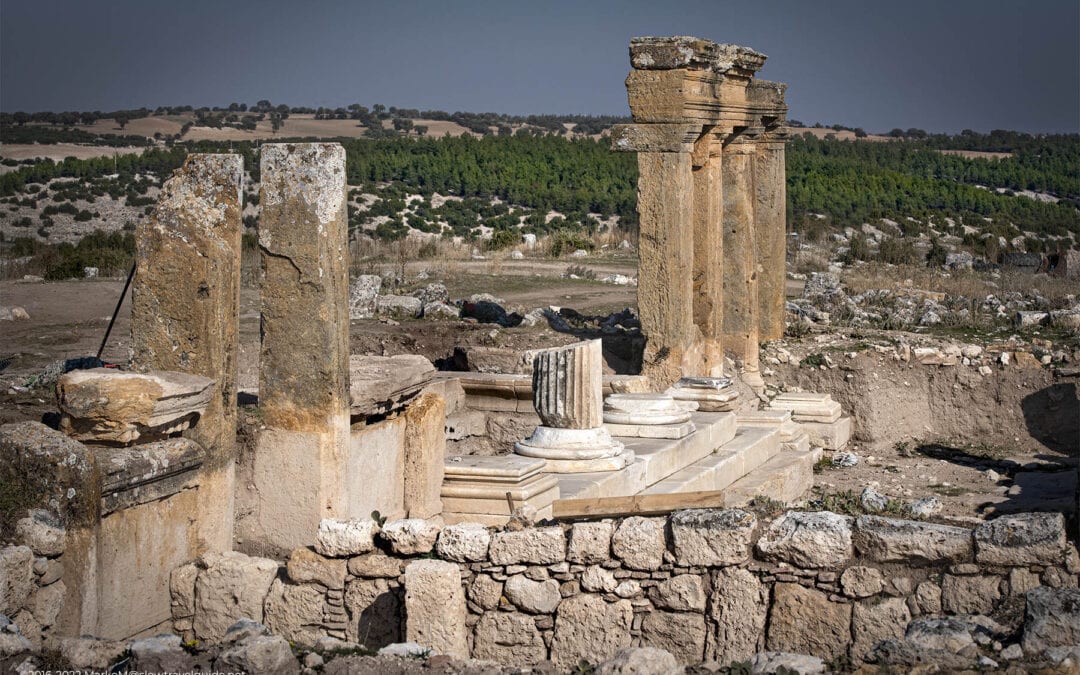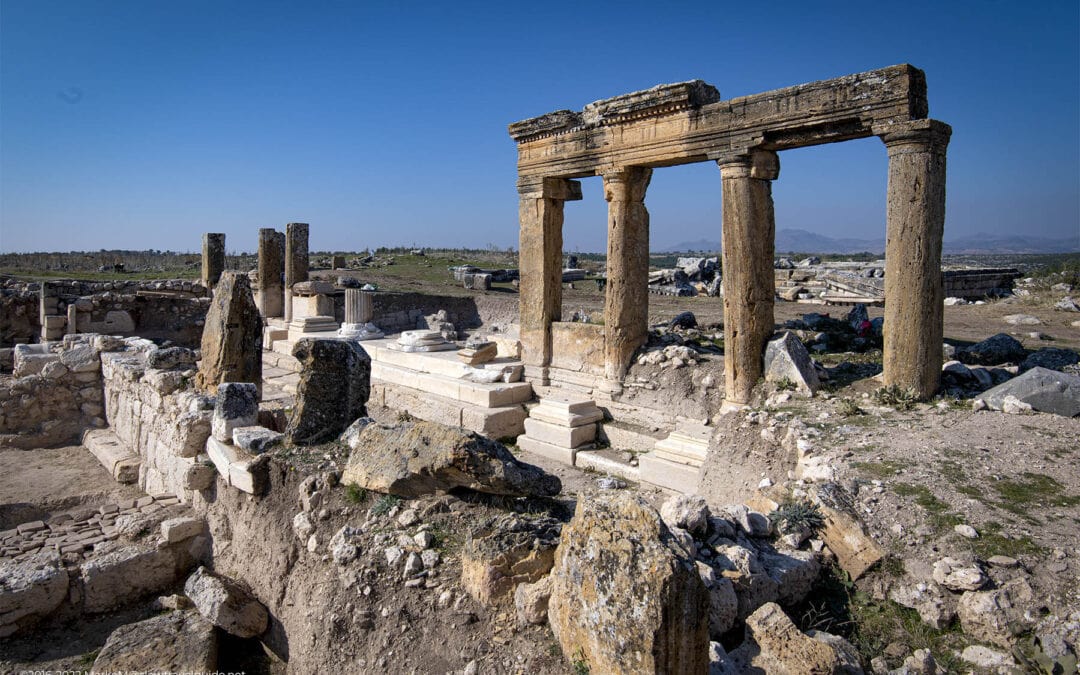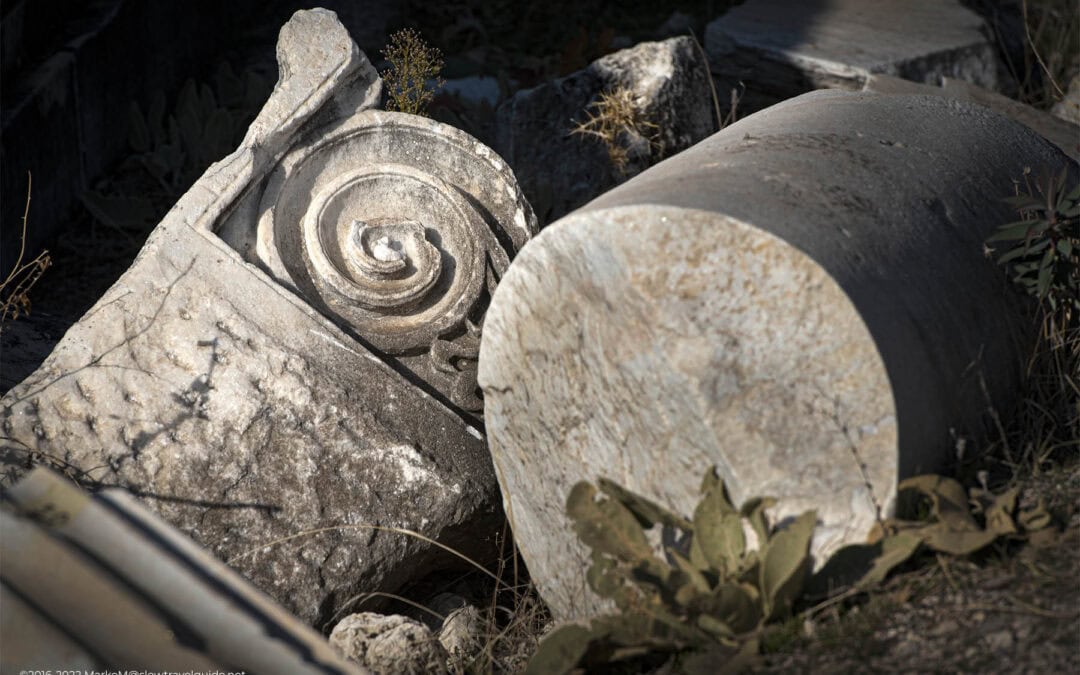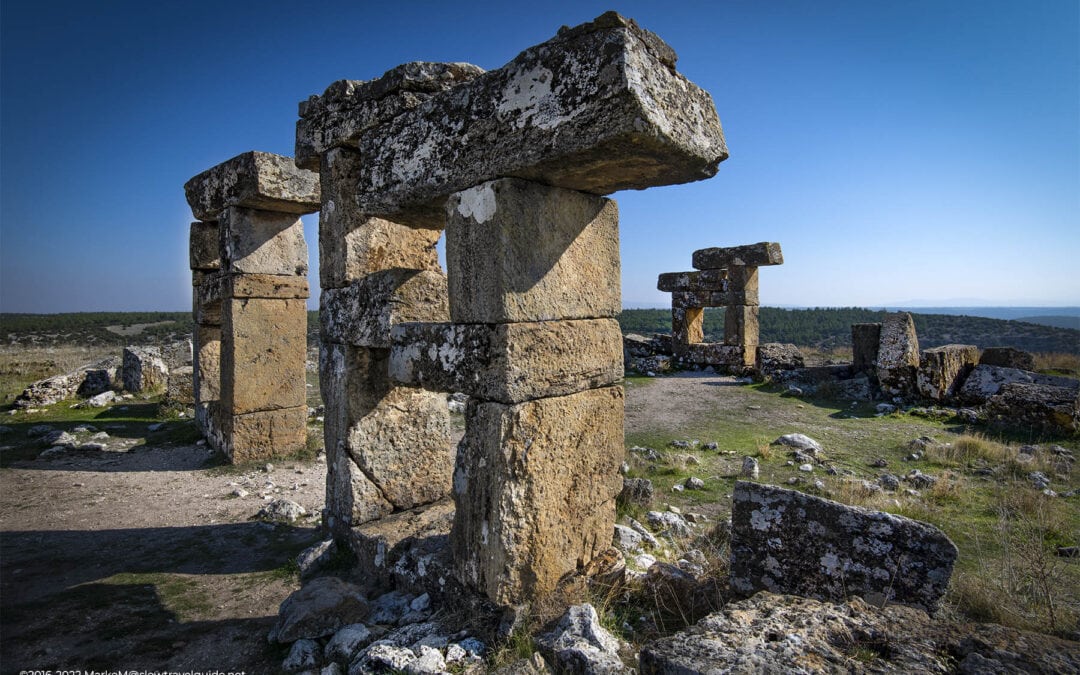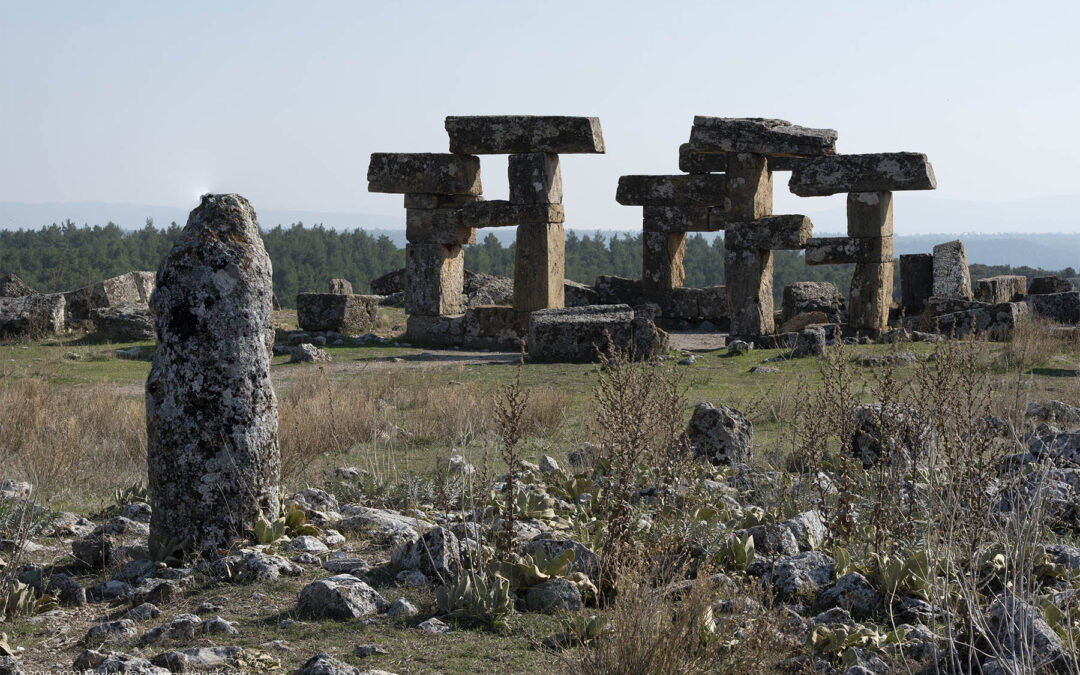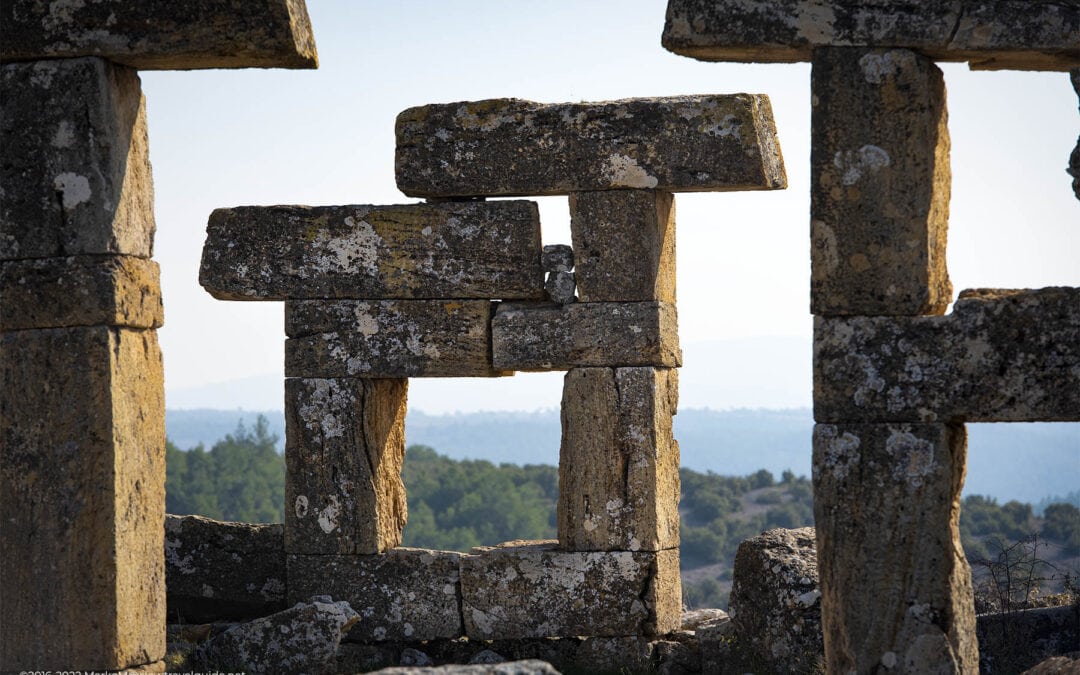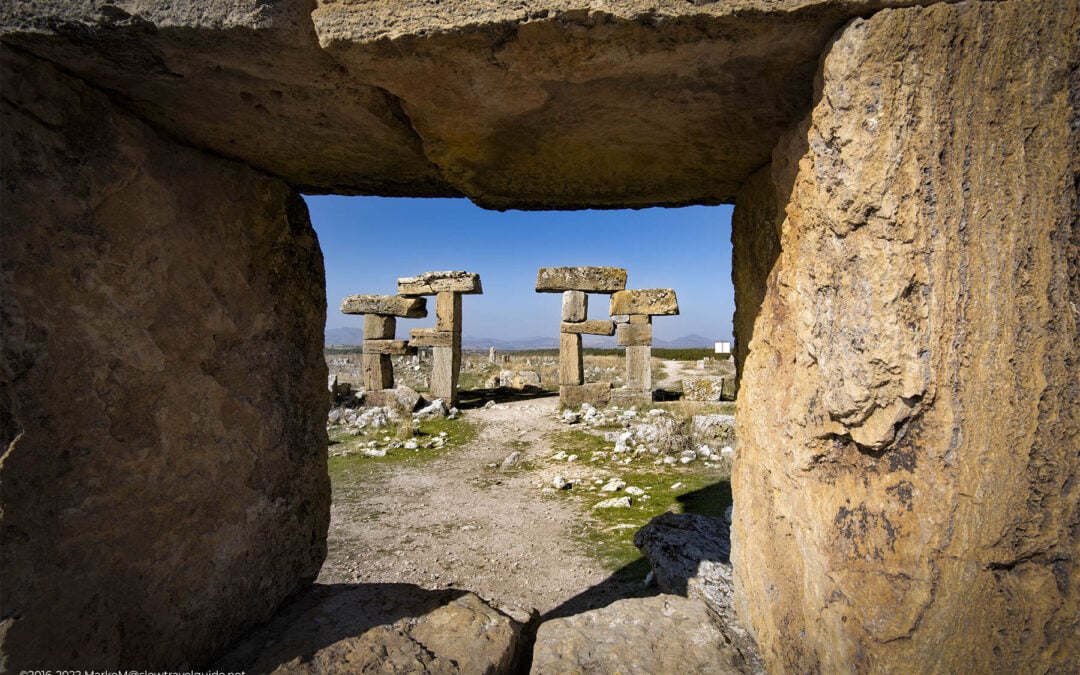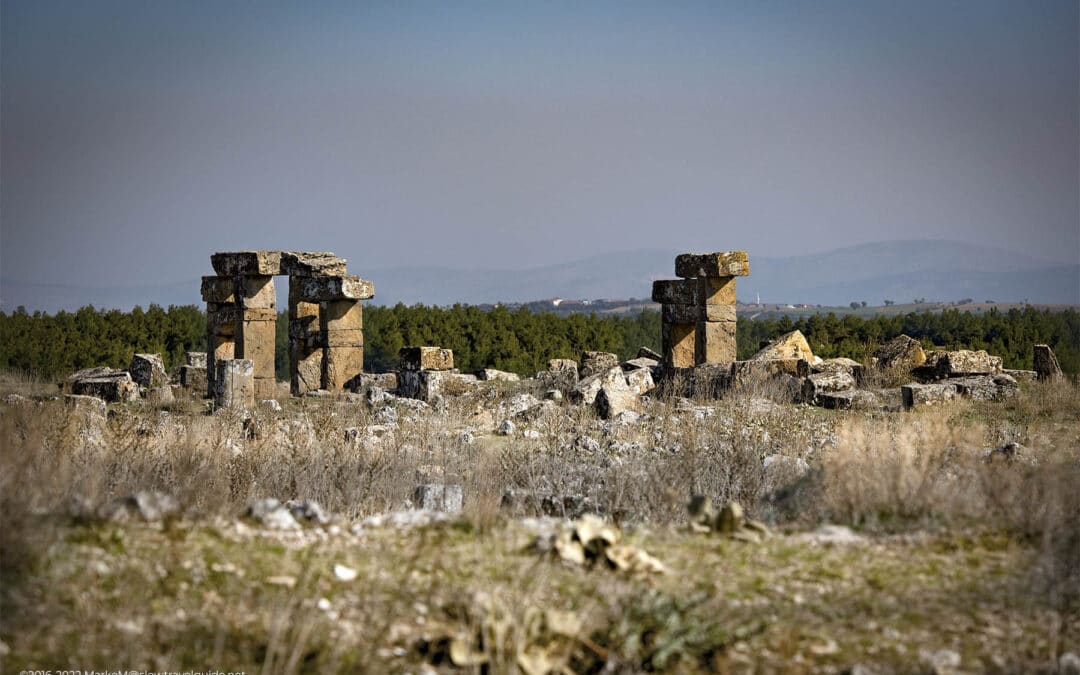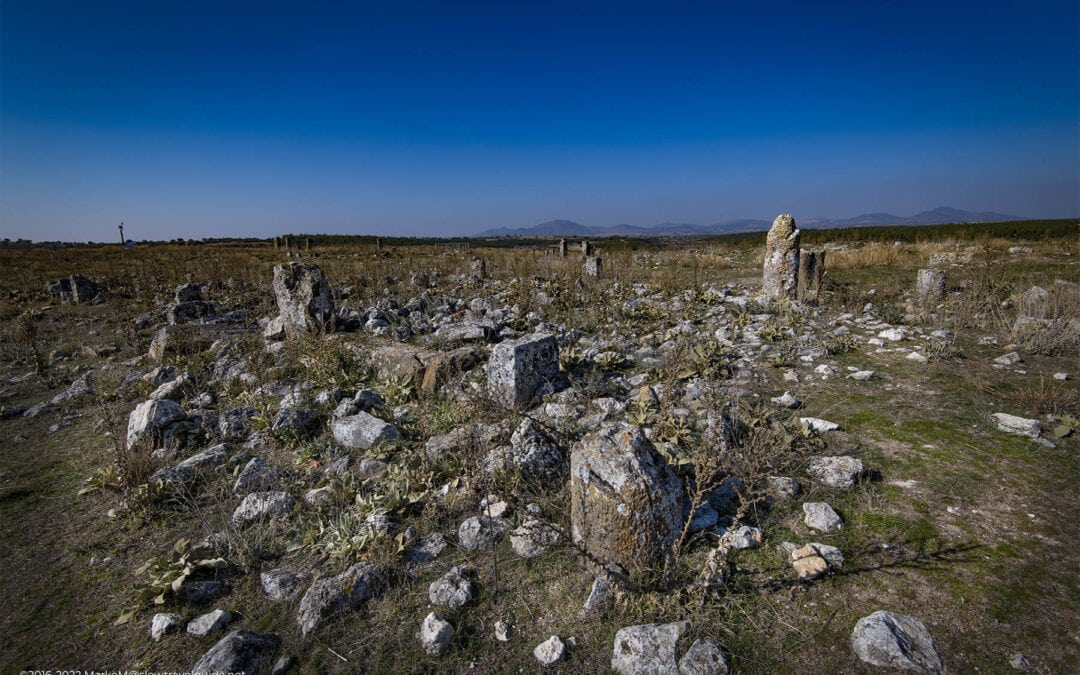Blaundos
Is It The Turkish Stonehenge?
By Slowtravelguide
Stonehenge in Anatolia?
The ancient city of Blaundos sits in a spectacular location, situated on a horseshoe-shaped bend on the top of a hill, surrounded by the Great Uşak-Ulubey Canyon.
It is a relatively unknown ancient site, but those who know it may have seen photos of the striking ruins commonly known as the Anatolian Stonehenge.
Although we can understand why people label the ruins of public buildings in Blaundos in this way, the truth is far from it! Ironically if you think that Stonehenge is said to be built by Anatolian farmers, you can say that there is a connection, but this is the closest it will get.
To this day, the purpose of Stonehenge remains controversial. Nevertheless, scientists agree that its function must have been an observatory or a religious or healing place and a cemetery.
The ancient city of Blaundos is not any of those, although it has the largest known rock cemetery in Anatolia. This city was established as a military colony of Macedonian soldiers in the Seleucid army. Today, it is an active excavation site, with new structures being unearthed regularly, making it an excellent place to be revisited from time to time.
Let us show you what to expect from this fascinating ancient site.
The History Of BLAUNDOS
Before the Macedonians set foot on the Acropolis, Blaundos had a settlement. Its name can be traced back to the Luwian language, spoken by one of the oldest people living in Anatolia. However, it was not until the Hellenistic period that the urbanisation of Blaundos gained momentum.
After the death of Alexander the Great in 323 BC, the area was first ruled by the late Emperor’s Macedonian commander, Antigonos Monophthalmos, followed by Lysimachos.
After the Battle of Kurupedion near Sardis, the Seleucids ruled the area from 281 BC until the Treaty of Apamea in 188 BC. At that time, the city as we know it today, was built on an existing fortress as a military colony for Macedonian soldiers in the Seleucid army.
The coins of these cities are engraved with the words “Blaundeon Makedonon”, just like the words on a stone pillar of the Bath Building, a significant discovery in November 2020.
Following the signing of the Apamea Peace Treaty, Blaundos was incorporated into the Kingdom of Pergamon and then became one of the cities of the Roman Province of Asia in 133 BC.
Around that time, in the first century AD, it knew its most prosperous period. Many buildings in Blaundos today are from that period, especially after the 60 AD earthquake.
Large-scale construction work continued until the 4th century AD, and the city had its coins. More buildings were built during the Byzantine period, most of which were unimportant structures that reused older Roman structures’ elements.
From the 9th century to the 12th century, the population of Blaundos continued to decrease until it was finally abandoned and rediscovered by travellers around 1833-1835.
(Picture Of An Old Etching At The Entrance Of The City)
Excavations In Blaundos
In 1995, a team of the Uşak Museum Council conducted the first excavation plan in Blaundos, followed by a more extensive investigation between 1999 and 2002. Since 2018, the city’s excavation and restoration plans have been underway, and archaeologists work here all year round.
(Archeologist At Work At The Bath Building)
Several Landmarks In BLAUNDOS
Blaundos welcomes you with some striking landmarks and buildings, even before reaching the city gate.
Some of these ruins require considerable imagination to envisage them; others, such as the last remaining arch of the Aquaduct, will immediately attract people’s attention. The aqueduct was built to meet the water demand of the city.
Although the Hippurios River surrounded Blaundos, the water was supplied from a spring near the village of Inay, about 8 kilometres away. The arch at the entrance to Blaundos is the only surviving arch in the aqueduct, but you will find more of it along the entire route.
Opposite the arch is the ruins of the Heroon. The history of this monument dates back to the second half of the first century AD and must belong to a famous citizen of Blaundos. It had been carefully decorated, but now there are only footprints left.
Necropolis Of Blaundos
If you want to try visiting the Necropolis of Blaundos, this is where you need to start. Facing the arch of the aqueduct, walk past the Heroon in the direction of the valley.
You will notice that the slopes around the valley and the entire city are used as cemeteries. Blaundos is the most significant rock burial ground in Anatolia, and many tombs are still well preserved.
Unfortunately, the accessible ones were destroyed by looters; others still display flowers and figurative multicolour paintings on their white stucco walls. The tomb is a family tomb with niches and sarcophagi.
We cannot reach those places safely, but it is planned to make it easier for tourists to get to the cemetery in the future. If you want to have a good understanding of the proportions of the necropolis, please continue to the gate area; from there, you have a good view.
City Gate Of Blaundos
At the highest point of Blaundos, just in front of the city gate, are the remains of the North Temple. The temple used to have a large courtyard with a massive entrance to the south, surrounded by collonaded galleries. Today, it is not the Northern Temple that catches your attention upon arrival; it is a monumental city gate.
It is an arched tower built in the Hellenistic period and was expanded several times during the Roman era. The city gate of Blaundos may not be its most famous landmark, but it is the best preserved.
After entering the city, you will see the stadium’s remains, with the ruins of the unexcavated theatre on the slope below it.
The stadium was built in the first century AD and is relatively short – only 140 meters long – and; the auditorium spans the west.
The Well Preserved City Gate
What To Expect
How To Get There: Private, rental car or by taxi (check the map below).
Nearest Airport: Uşak Airport.
Parking: Yes.
Terrain: Medium.
Stroller: No.
Entry Fee: Free.
Facilities: No.
Best Time To Visit: All year, depending on the weather.
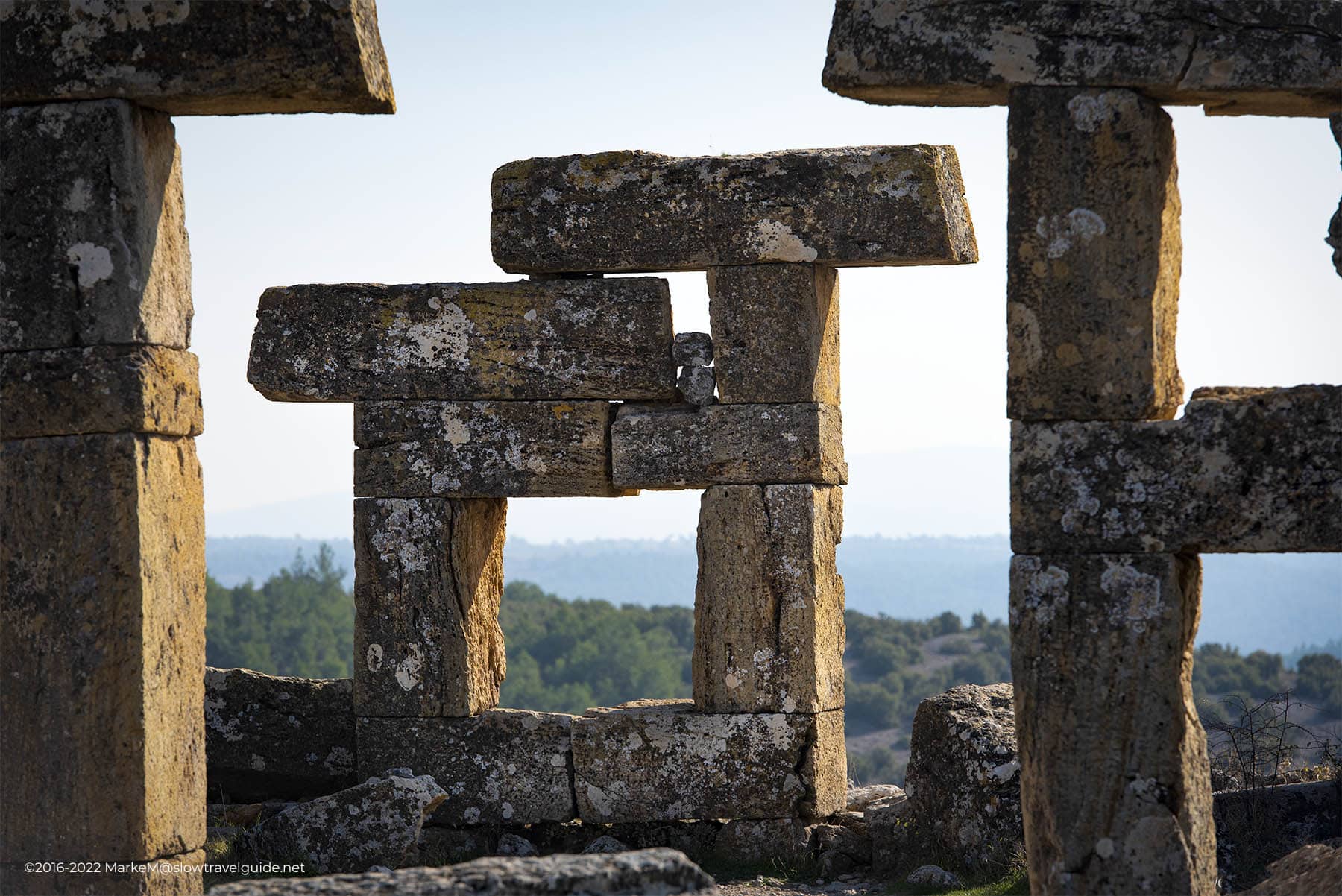
Inscription At Blaundos’ Bath House
Roman Bath House At Blaundos
Blaundos’ new gem is undoubtedly the Roman Baths found near the stadium terrace.
The Bath part that is currently being excavated is a hot spot. Archaeologists have discovered and documented the heating system, which was later recovered.
Studies have shown that the Bath Building was built with marble from a local quarry.
Colonnaded Street In Blaundos
After the baths and stadium is another temple. The Southern Temple dedicated to Demeter is an Ionic Order Temple built around 50 AD. It is located in a large courtyard, accessed through a pillar from the main street.
There are not many remains of the Temple of Demeter, but there are many activities around the Temple and Colonnade, so things may start to be different soon! Only a few pillars of the Doric Portico of Colonnade Street survived, enough to give you a glimpse of the former style.
Colonnaded Street Area In Blaundos
Iconıc Image Of Blaundos
South of the Colonnade Street is a Basilica, followed by a public building, the remains of which are now the most iconic image of the ancient city of Blaundos.
This is the part of the site which people label Stonehenge in Anatolia. There may be some similarities from a distance, but they are not comparable. Blaundos deserves its title because we believe that this active archaeological site still has many surprises.
Even in the current state of being largely unexcavated, Blaundos is well worth a visit because of its spectacular location and the fact that the work of archaeologists can be seen.
When Ruins Become Art
If you have any questions about a place, feel free to ask. You can send us a message through our contact page or leave a comment on our Instagram or Facebook pages.
You can also join our group Turkey Travel Photography on Facebook to share your lovely photos or experiences about Turkey.
Practical Information
The ancient city of Blaundos is a great place to visit, and it is easy to combine with other nearby sites, such as the Ulubey Canyon or the glass observation deck of the Clandras Bridge. The site has good road signs and is easy to reach by car.
Blaundos does not have public transportation, so if you do not have a car, you will need to take a taxi to get there.
Blaundos has an official opening and closing times. Nevertheless, it is still an open secret that the site is loved by astrophotographers. As long as you respect the cultural heritage and natural environment, the authorities will respect this. There are no on-site facilities, so please bring enough water, items that can protect you from the sun, and wear sturdy shoes, especially if you plan to stroll further away.
Places We Recommend
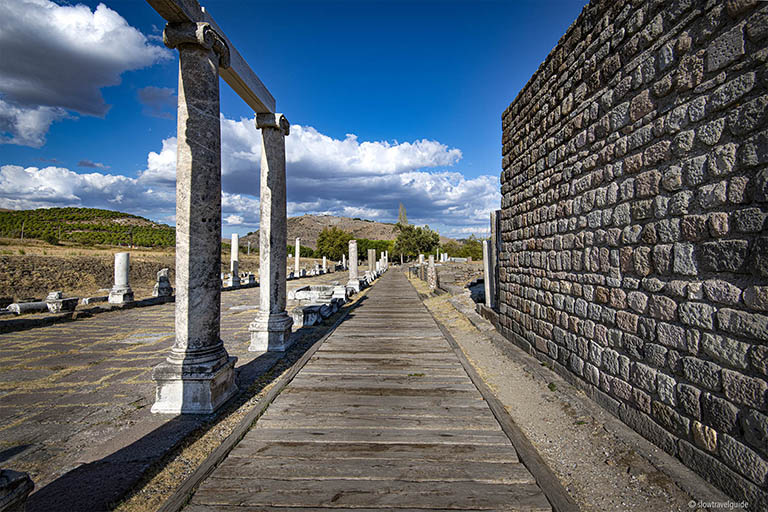
Asklepieion
Visiting the Asklepieion in Pergamon was a revelation in many ways. This ancient site is overlooked by the Acropolis of Pergamon and is very attractive. (Coming soon)
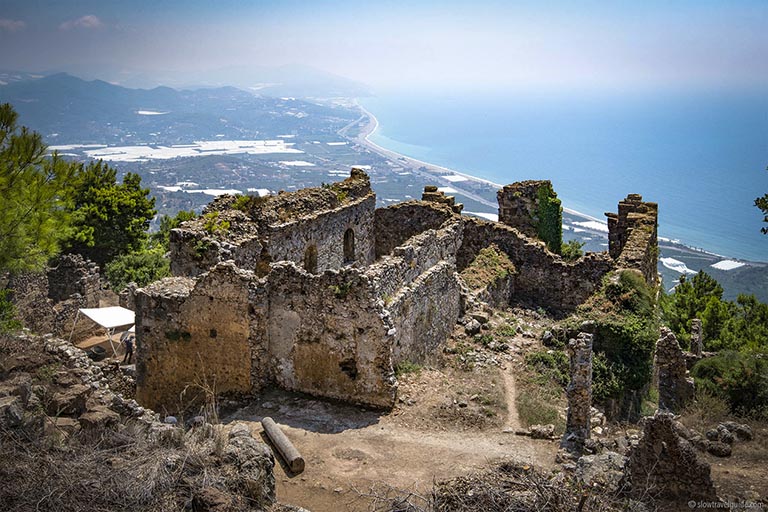
Syedra
If you are looking for an excellent ancient site near Alanya, check out Syedra. This place is best known for its pictures of bathing sites on the coastal slopes of Mount Taurus on the southeastern coastline of Alanya. (Coming soon)
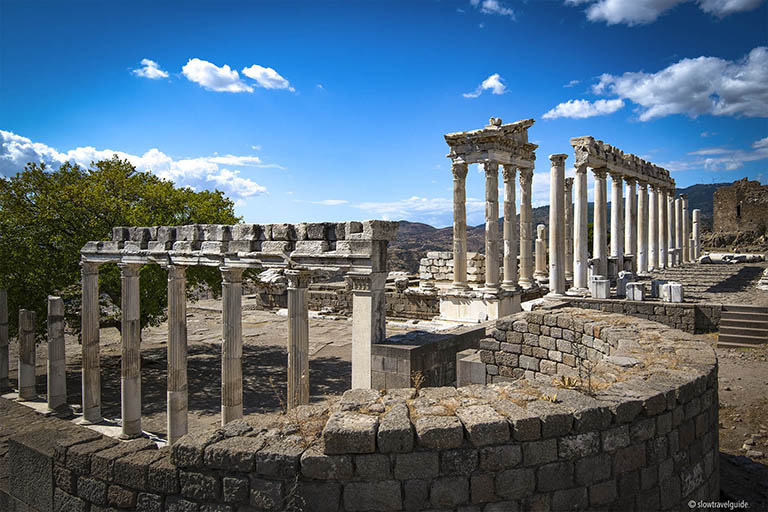
Pergamon
Theatre and three-terraced gymnasium are perfect examples of how existing natural rules can be integrated into urban planning. (Coming soon)
© 2016-2022 All rights reserved by slowtravelguide.net.
The content of this website is copyright protected and the property of slowtravelguide.net.No part of this website may be reproduced in whole or in part in any manner without the written permission of the copyright owner.
Copyright ©2016-2022 Tüm hakları saklıdır. Bu (slowtravelguide.net.) web sitesinin içeriği koruma altındadır ve slowtravelguide.net.Buradaki hiçbir içerik (yazı,fotoğraf,video vb.) izinsiz olarak kopyalanamaz, alıntı yapılamaz,başka yerde yayınlanamaz.

